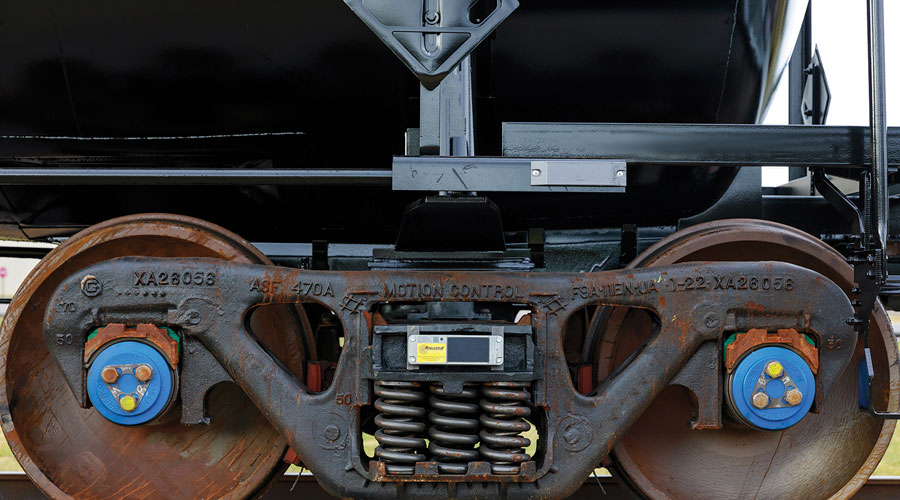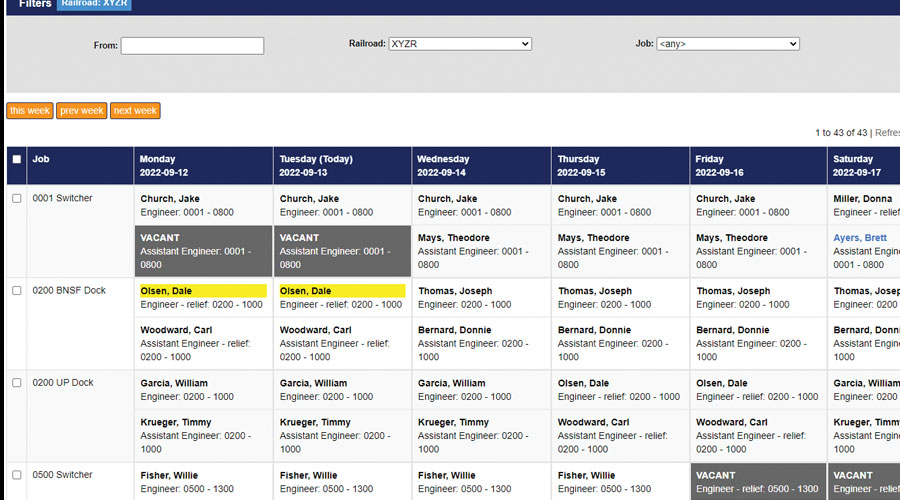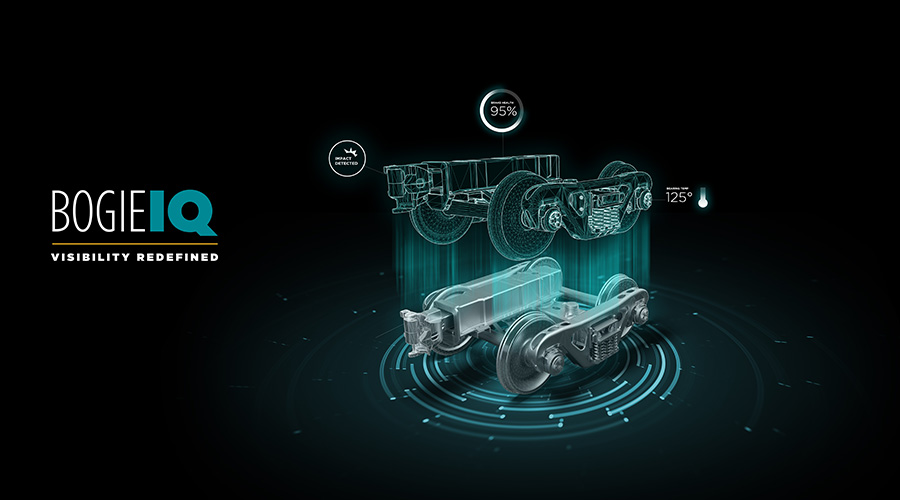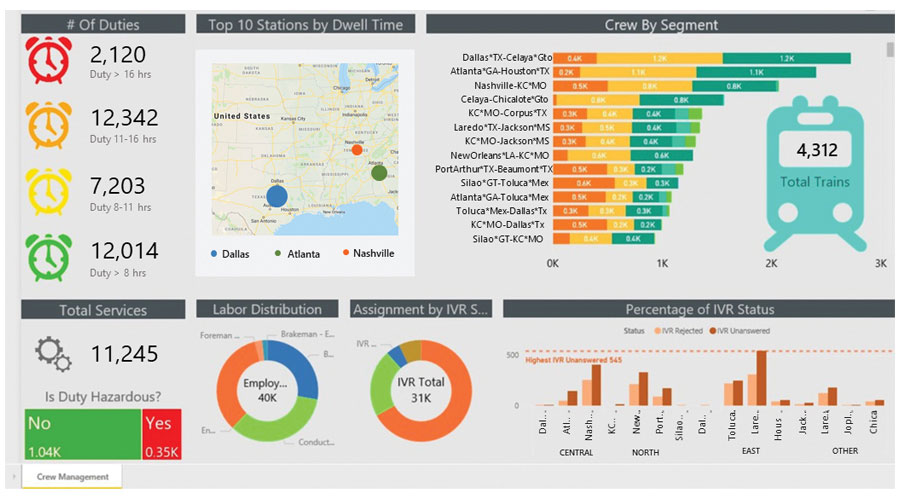Stay updated on news, articles and information for the rail industry
February 2019
Rail News: Internet-Digital
Big Data conference highlights rail industry’s embrace of analytics, blockchain, AI
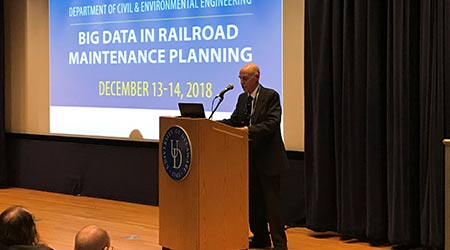
By Michael Popke
The “Big Data in Railroad Maintenance Planning” conference began in 2014 on the University of Delaware campus as a one-time-only meeting of the minds. The aim: to discuss the role data science plays in making the rail industry safer and more efficient.
“I was expecting 50 people that first year, and we had 100 show up,” says Allan Zarembski, a professor in the university’s Department of Civil and Environmental Engineering, and director of the university’s Railroad Engineering and Safety Program, which hosts the conference. “I was barely able to fit everybody in. It was standing room only. We hit on a critical area that nobody else was looking at, and we continue to hit on it.”
During the next five years, the number of conference attendees continued to climb — reaching 255 people at the most-recent two-day event, held Dec. 13-14, 2018. Attendees represented Class Is, short lines and transit agencies, and in addition to the typical maintenance and planning titles held by many past attendees, the latest group also included individuals whose business cards identify them as “chief data scientist” or “data analyst,” Zarembski says.
The conference focus also has shifted. "Big Data in Railroad Maintenance Planning" now strives to introduce new and emerging data analysis techniques while also demonstrating how those techniques can be applied.
“Rail engineers and decision-makers are beginning to understand the importance of data and how the right analyses address both economics and safety at the same time,” said Nii Attoh-Okine, a professor in the University of Delaware’s Civil and Environmental Engineering and Electrical and Computer Engineering departments, via email. He presented a topic at the conference titled “The Future of Blockchain Technology in Railway Track Engineering.”
“Young railway engineers have the tools to look beyond the engineering side of track engineering," Attoh-Okine added.
'We encourage them to be very technical'
More than three dozen speakers at the 2018 conference presented on topics ranging from an overview of the industry’s Big Data applications and needs to case studies covering asset management for railway infrastructure and rolling stock.
For example, Amtrak Senior Engineer Inspection and Specification Steven Melniczuk talked about applying Big Data to the design of optimized concrete crossties for shared corridor operations.” Joshua Doran, a data scientist with VisioStack Inc., spoke about leveraging drone imagery to support planned track maintenance. Meanwhile, two presenters from Norfolk Southern Railway — Assistant Chief Engineer Maintenance of Way & Structures J. Shane Rice and Senior Manager of Advanced Analytics Mabby Amouie — discussed the Class I’s experience using artificial intelligence and machine learning to predict rail wear.
Other presentations focused on how Big Data can be used to predict wheel slides and analyze infrastructure measurements.
“We tell our presenters to not hesitate to be technical. In fact, we encourage them to be very technical, because the technical level of our attendees is quite high,” says Zarembski, a 42-year veteran of the rail industry who remembers when track geometry cars were considered state of the art for data collection. “... A lot of the presentations go into the very sophisticated methodologies that are being used to develop the analytics and how they’re applied. It’s no longer, ‘This is the data and these are the results.’ We want to people to present how they do the analytics and the numerical, mathematical and analytical techniques they use.”
During the conference’s first years, most topics were based on academic research; today, many of the presentations are rooted in real-world examples drawn directly from railroads’ experiences.
“Each year, the various presentations become stronger and more technically challenging,” said conference presenters Lariza Stewart and David Pagliuco in an email.
As project manager and quality assurance manager, respectively, for Georgetown Rail Equipment Co. (GREX), Stewart and Pagliuco gave a presentation titled “An Artificial Intelligence Approach to Aligning Historical Railroad Data.”
“We thought our research project was a natural fit for the event since it was a Big Data AI application that supports our core decision processes for [a specific] track inspection program," they said. "A theme of linear asset inspection data is the need for good alignment to enable accurate trending, and we wanted to show the effectiveness of our approach to further push the envelope of ideas within the rail industry."
Takeaways from using an AI approach include the need for big data to create a "successful artificial intelligence model" and the power of image recognition and classification for identification of track assets, Stewart and Pagliuco said.
“We also learned our AI-driven approach and techniques can be used to create solutions to other data issues that were once beyond the capabilities of basic analysis techniques,” they added.
Plenty more to learn about Big Data
Despite so much new information in the Big Data realm available — in AI, blockchain, analytics and more — there remains a great deal to learn.
“The railway industry is by no means at the leading edge of this technology, not like people in the cybersecurity, finance and medical industries,” Zarembski says. “So as sophisticated as we think we are, we’re still down the food chain in terms of [being] leaders in this area.”
A goal for the Big Data conference planners is to move the rail industry further up that chain.
“Today, railroads are being overwhelmed with data, and the question is, what do we do with that data?" Zarembski says. "The big thing about Big Data is that the traditional ways of getting useful information out of the increasing amounts of data coming to railroads from all directions are very limiting. There are a huge number of missed opportunities."
But Big Data enables railroads to get "actionable information" — the kind they can "actually use day to day, month to month and year to year in short-, medium- and long-term capital programs,” Zarembski says.
And the time to get better at getting actionable info is now.
“We are at a stage when we can really take advantage of the historical data by creating intelligent models, thus allowing the industry to move away from remedial maintenance and toward a more predictive and preemptive approach,” said GREX’s Stewart and Pagliuco.
The 2019 “Big Data in Railroad Maintenance Planning” conference is slated for Dec. 11-12 at the University of Delaware, and it might be held in a larger, new facility on campus to accommodate the increasing number of participants, Zarembski says.
He also expects the event focus to continue to evolve.
“I like the broadening of the conference, because big data on the mechanical, track and operations sides have a lot of commonalities in terms of analysis tools and analytical approaches and how you leverage the information best to improve safety, reduce costs and improve efficiency,” Zarembski says. “It’s really nice to see the railroads stepping up in this area.”
Michael Popke is a Madison, Wisconsin-based freelance writer. Email comments or questions to prograil@tradepress.com.


 2025 MOW Spending Report: Passenger-rail programs
2025 MOW Spending Report: Passenger-rail programs
 Gardner steps down as Amtrak CEO
Gardner steps down as Amtrak CEO
 Guest comment: Oliver Wyman’s David Hunt
Guest comment: Oliver Wyman’s David Hunt
 Women of Influence in Rail eBook
Women of Influence in Rail eBook
 railPrime
railPrime




